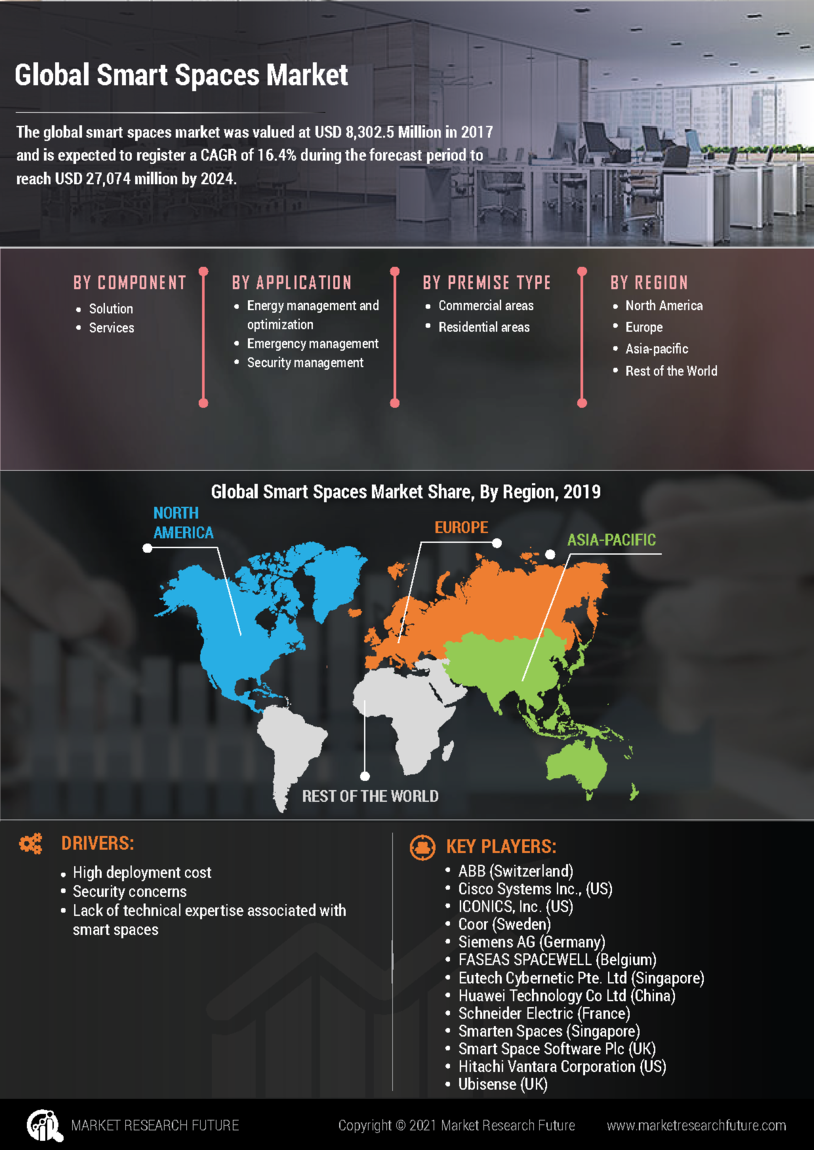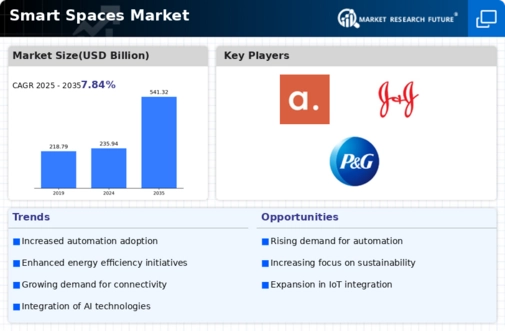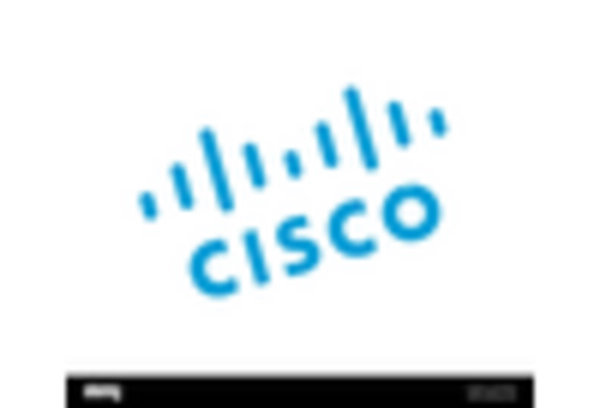Growing Urbanization
The rapid pace of urbanization across the globe is a primary driver for the Global Smart Spaces Market Industry. As more individuals migrate to urban areas, the demand for efficient, connected environments increases. Urban centers are projected to house over 68% of the world population by 2050, necessitating smart solutions to manage resources effectively. This trend is reflected in the anticipated market growth, with the Global Smart Spaces Market expected to reach 235.94 USD Billion in 2024. Urban planners and governments are increasingly investing in smart infrastructure to enhance livability and sustainability, indicating a robust future for smart spaces.
Enhanced User Experience
The desire for improved user experience is a significant factor influencing the Global Smart Spaces Market Industry. Consumers increasingly expect seamless interactions with their environments, whether in residential, commercial, or public spaces. Smart technologies, such as voice-activated systems and personalized settings, cater to these expectations, enhancing comfort and convenience. For instance, smart home systems can learn user preferences and adjust settings accordingly, leading to higher satisfaction levels. As user-centric designs become more prevalent, the market is likely to expand, driven by the need for environments that adapt to individual needs and preferences.
Market Growth Projections
The Global Smart Spaces Market is poised for substantial growth, with projections indicating a rise from 235.94 USD Billion in 2024 to 541.32 USD Billion by 2035. This trajectory suggests a compound annual growth rate of 7.84% from 2025 to 2035, highlighting the increasing adoption of smart technologies across various sectors. The market encompasses a wide range of applications, including smart homes, smart offices, and smart cities, each contributing to the overall expansion. As stakeholders recognize the benefits of smart spaces, investment and innovation are likely to accelerate, further propelling market growth.
Sustainability Initiatives
The emphasis on sustainability is a driving force behind the Global Smart Spaces Market Industry. Governments and organizations worldwide are prioritizing eco-friendly practices to combat climate change. Smart spaces facilitate energy efficiency, waste reduction, and resource management, aligning with global sustainability goals. For example, smart buildings equipped with energy management systems can reduce operational costs by 30% while minimizing their carbon footprint. As the market evolves, the demand for sustainable solutions is expected to rise, contributing to the market's growth trajectory. The Global Smart Spaces Market is projected to reach 541.32 USD Billion by 2035, reflecting this increasing focus on sustainability.
Technological Advancements
Technological innovations play a crucial role in shaping the Global Smart Spaces Market Industry. The integration of Internet of Things (IoT) devices, artificial intelligence, and big data analytics enhances the functionality of smart spaces. These technologies enable real-time monitoring and management of resources, improving efficiency and user experience. For instance, smart lighting systems can reduce energy consumption by up to 60%. As these technologies evolve, they are expected to drive the market significantly, with a projected compound annual growth rate of 7.84% from 2025 to 2035. This growth highlights the increasing reliance on technology to create smarter environments.
Government Support and Regulations
Government initiatives and regulations are pivotal in shaping the Global Smart Spaces Market Industry. Many countries are implementing policies that encourage the adoption of smart technologies in urban planning and infrastructure development. These initiatives often include funding for smart city projects and incentives for businesses to adopt sustainable practices. For example, the European Union has launched various programs aimed at promoting smart city solutions, which significantly contribute to market growth. As governments continue to support the transition towards smart spaces, the market is expected to flourish, driven by regulatory frameworks that facilitate innovation and investment.
















